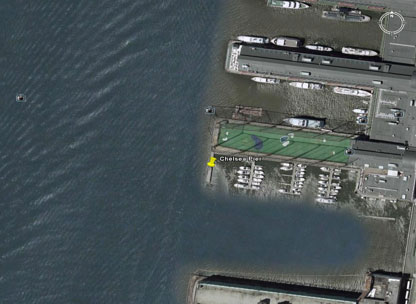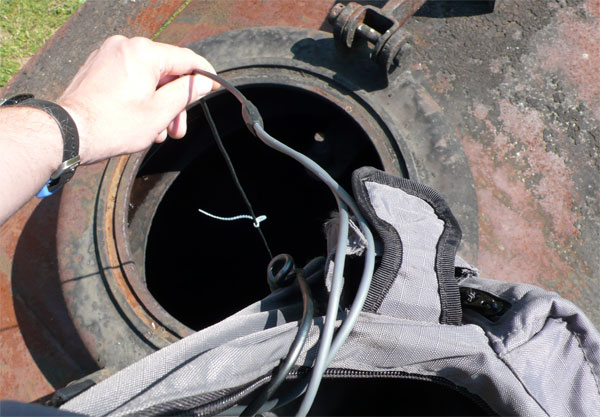|
Working with field recordings
Aernoudt Jacobs |
 |
|
| “The channels of our perception have been smoothed out to the point where we are no longer aware (...) It may be that without it life would be impossible.”
Andrey Tarkovsky, Time within Time: The Diaries 1970-1986 “With one look, you and I perceive three wine glasses on a table; Funes perceived every grape that had been pressed into the wine and all the stalks and tendrils of its vineyard. He knew the forms of the clouds in the southern sky on the morning of April 30, 1882, and he could compare them in his memory with the veins in the marbled binding of a book he had seen only once, or with feathers of spray lifted by an oar on the Rio Negro on the eve of the battle of Quebracho. Nor were those memories simple–every visual image was linked to muscular sensations, thermal sensations and so on. He was able to reconstruct dreams, every daydream he had ever had. Two or three times he had constructed an entire day; he had never once erred or faltered, but each reconstruction had itself taken an entire day.” Jorge Luis Borges, Funes His Memory
"When a tree falls in a lonely forest, and no one is around to hear it, does it make a sound? Why?” Charles Riborg Mann, George Ransom Twiss, Physics (1910)
"The first and principal difference between various sounds experienced by our ear, is that between noises and musical sounds.” Hermann von Helmholtz
Perception has always been an important aspect in my sound and installation works. My preoccupation with auditory perception arose while I was out making field recordings. It was a natural side-effect of the listening/recording process and of investigating relations between listening and the audial object. Perceiving music, sounds and harmonies is a physical, emotional and intellectual activity that is always linked to personal memories. The properties of a particular piece of music or a sound will influence each individual’s perception. Hearing a tune on the radio can have as deep an impact on perception as listening to a car passing by. The relations between audial perception and physical, emotional and intellectual activities comprise an ongoing preoccupation of mine and are present in most of my works. On a more scientific level, with the aid of psycho-acoustic theories, I explore how perception can be influenced and how sound can be expressed physically, spatially and emotionally. My work focuses on a central question: how can the complexity, richness and stratification of our direct, daily environment be translated into something that can really be experienced? How can a field recording reach a beholder in the most efficient manner? What perceptual conditions can I design to yield specific experiences? What does this tell us about our perception in general? Our experience is always biased by our own structure (our body of experience). Francisco J. Varela writes in his book “The Tree of Knowledge”: We do not see the 'space' in the outside world, but we experience it through our own representational space... We cannot just separate the biological and sociological background of our actions from the way in which the world presents itself to us. We don't hear “frequencies”, we experience them. Sound is always coloured, not only by form but also by the different layers of meaning we extract from our own experiential background. All these questions tell a lot about ‘what’ man is and how he moves in his environment. My work addresses these questions by means of environmental (sound) installations, compositions, field recordings, ...
Field recording: recording a real sound environment Making field recordings is a creative, perceptual process. The act of recording is itself always an experience and a subjective action. It becomes an experiential process of listening and assimilation. I equate this process to that of ‘critical’ listening. Meanwhile, recording is also a matter of experiencing reality in a very peculiar way. It is like changing the way you normally perceive things because the usual equilibrium between the five senses falls out of balance. The aural part is much more present. I experience this as a vivid, intense and individual experience of reality. There is an inseparable connection between the experience of perception and the source of perception It is amazing the density of sound matter you get if you stand still, concentrate and actively listen to the different levels of a sound environment. You become aware of how many layers of sound your brain filters out when you are not actively listening. Sometimes I just try to concentrate on the elements that are naturally filtered and then catalogue the different layers of sound. I am always fascinated with concrete sounds and the emotions inherent in them. Because concrete sounds are mostly linked to a ‘subjective, visual and physical memory’, they trigger emotions very different from those triggered by music. I apply these emotions and/or at least consciously work with them when I process field recordings. I also isolate parts of recordings and paste them in a different context in order to create contrasts, structures and new layers of sound. Sound occupies a special place in human perception. It is the only sense which allows three-dimensional sensing through binaural hearing (1). It allows a wave / particle / conductive perception of reality. The wave propagation of sound is well-known (e.g., sound through loudspeakers). We can also differentiate the physical and particular source (e.g., a familiar voice, cultural differences with the tone of a voice or raindrops on a window). Underwater hearing is achieved by bone conduction (2) and this palpably demonstrates that hearing affects the body as well as the ear. The properties and shape of a given space in which sound is perceived give some clues about that space. Each space has qualities and features that affect the sound per se and the sound perceived. For example, a sound in a canyon will differ from the same sound in a room. This is because each space/material has its own resonant frequencies, moreover, large spaces are more reverberant than small spaces (see, for example, Alvin Lucier’s work: I Am Sitting in a Room, 1970). My other investigations in perception involve disclosing sounds not normally heard. Due to the limitations of our hearing and auditory sensitivity, I build special hearing devices to amplify and record. These devices are partly based on research in acoustic methods for detecting insects in soil, grain silos and wooden structures (3), for example, I use them to listen in confined spaces or through solid and liquid materials. What is interesting here is that listening occurs through an additional sonic filter. Sounds can become quite evocative. In the case of solids, sounds are perceived through physical vibrations. Sounds are automatically designated a history, a memory, a physicality and a soul. For this to happen in my own works, I use found objects (panels, signals, a tree trunk, organic waste, etc.) at the site where I record, or just parts of a building, or for instance a bridge. This perception of sounds through conducting materials adds a different perspective, an alienated time-space. Things become more connected and related. Reality and recorded matter
The act of listening is a very complicated and extensive topic. It is fundamental to understand that a listening experience will always differ drastically from the recorded matter. This has to do with the radical differences between the experiential listening process and the recording process (as technology). A listening process is a perceptual process that will never match with the recorded matter. Here are some ideas and questions I think about in the course of my work:
|
